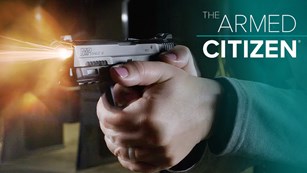
The Winchester lever-action is known as the rifle that won the West, but few people know why. The development in firearms that propelled the United States westward was the introduction of the first repeating rifles.
It was Benjamin Tyler Henry who introduced the first successful repeating rifle in 1860: the Henry rifle. Winchester followed suit in 1873 by introducing its version, the Model 1873. It was Jimmy Stewart’s hit movie, Winchester ’73, that made Winchester synonymous with lever-action rifles.
What is a repeating rifle? A repeater is the term used to describe a magazine-fed firearm. Up until the Henry rifle was introduced, civilian and military arms were single-shot firearms. The shooter had to manually load a new round in the chamber after firing the previous round. The ability to fire a round, open the action to eject the spent casing and feed a new round by closing the action was a major breakthrough.
Today, consumers have a choice of different types of magazine-fed rifles. There are only two types of magazines, but several versions of each. The two types of modern rifle magazines are tubular magazines and box magazines.
Tubular Magazines
Tubular magazines were the first successful magazines used in rifles. This type of magazine has been around since the Henry rifle in 1860. The United States Cavalry and infantry were then able to carry a rifle loaded with more than one round. This gave them superior firepower over their adversaries. Many of these magazines could hold five or more cartridges, depending on the caliber, allowing one soldier to put as many rounds towards the enemy as five soldiers previously could!
The tubular magazine, first found on lever-action firearms, is located under the barrel. Most tubular magazines look like a second barrel underneath the first. Tubular magazines can be loaded through a cutout in the tube, a loading gate on the receiver, the stock or a loading gate under the receiver. The tubular magazine has a follower that is pushed forward by a spring to feed the cartridge into the receiver to be loaded into the chamber.

Many tubular magazines are accessed by removing a plunger. Most plunger-type magazines are .22s. Most modern Henry rifles use plunger loading, including the larger .45-70 cartridge. This type of loading can be identified by a cutout on the magazine itself. The plunger is rotated a quarter turn and removed. The cartridges are then inserted through the cutout. The cutout matches the way the cartridge is inserted. The plunger is then re-inserted and turned to lock it back into place.

Older firearms are fed through a tubular magazine within the stock. To load this type of firearm, a plunger is removed from the butt of the stock. Some of these rifles are loaded through the hole that the plunger was removed from, and others are fed through a slot or stock loading port on the side of the butt stock. Once the cartridges are loaded, the plunger is re-inserted and locked into place.
Other tubular magazines are loaded through a loading gate on the receiver. Rifles that have a loading gate on the receiver are usually lever action. To unlock the loading gate on this type of firearm, the lever must be all the way in the closed position. Once the lever is closed, the cartridges can be inserted by pushing the nose of the cartridge into the loading gate, causing it to open. After the cartridges are inserted, the loading gate will close and allow the cartridges to be fed into the receiver.
The most important thing to remember regarding tubular magazines is to never load pointed ammunition into the firearm. This is because the point of one cartridge is resting on the primer of the cartridge in front of it. The recoil of the previous round could cause a chain fire which can damage the firearm and cause serious bodily injury or death. Only use blunt, flat nose or lever-action specific ammunition.
Box Magazines
The second type of magazine is the box magazine. The box magazine comes in two configurations: the detachable box magazine and the internal box magazine. Each has its own benefits and disadvantages.
 Detachable box magazines are very popular in modern sporting arms. To load a detachable box magazine, the unit must be removed from the firearm. This is done by either depressing a lever or depressing a button, depending on the firearm. The cartridges are pressed into the magazine through the feeding lips. The magazine is then re-inserted into the firearm and fed into the chamber by the bolt.
Detachable box magazines are very popular in modern sporting arms. To load a detachable box magazine, the unit must be removed from the firearm. This is done by either depressing a lever or depressing a button, depending on the firearm. The cartridges are pressed into the magazine through the feeding lips. The magazine is then re-inserted into the firearm and fed into the chamber by the bolt.
The shooter must ensure that the detachable box magazine is securely inserted. This can be done by hitting the bottom of the magazine with an open hand, striking it with the palm. An improperly inserted magazine can cause feeding problems and other malfunctions. The shooter must always remember that a semi-automatic firearm should be loaded through the magazine and not directly into the chamber. Loading directly into the chamber could cause the primer to detonate when the bolt is closed.
The biggest disadvantage of a detachable box magazine is that it can easily be lost, rendering the firearm useless. However, the biggest advantage of the detachable box magazine is how easily damaged or magazines with weak springs can be replaced. This allows the shooter to fix the problem herself without having to send the firearm to a gunsmith. Another advantage is that the detachable box magazines can be made to hold various quantities of cartridges, typically three rounds for bolt-action hunting rifles to 30, 40 or more for semi-automatic AR-style rifles.

The other type of box magazines are the internal box magazines. To load an internal box magazine, the shooter opens the action and inserts the cartridges horizontally into the breech. The thumb is then used to press the cartridges into the built-in magazine. Often there is an audible click when the rounds are properly seated. The cartridges are then fed into the chamber of the firearm when the bolt is closed.

Many internal box magazines have a floorplate on the bottom of the firearm under the breech opening. The shooter has the option of unloading the firearm by working each round through the chamber or by opening the floorplate. The floorplate is often hinged and when unlatched, the ammunition falls out. Some firearms with an internal box magazine do not have a floorplate because the stock covers the area where the floorplate would be.
There are several disadvantages of internal box magazines. If the firearm is unloaded by cycling the cartridges through the action, which requires extreme caution to avoid discharging a round. The other disadvantage is that any parts that need to be replaced should be done by a qualified gunsmith. Another disadvantage is that the internal box magazine can only hold a limited number of cartridges depending on the caliber, compared to that of the detachable box magazine.
The advantage of an internal box magazine is how streamlined firearms can be. This is an advantage when carrying the firearm in a saddle scabbard or in a case. Additionally, the magazine cannot hang-up on something when shouldering like a detachable box magazine might.
When purchasing a firearm, the type of magazine is an important consideration. The intended use of your firearm is important when deciding which rifle is best, so take the purpose of your rifle into account when viewing different magazine types. A firearm with a stream-lined profile might be the best choice for a hunting rifle. A firearm that is capable of holding a large number of cartridges might be a better choice for a self-defense rifle. When choosing the best firearm for your situation, you should look at the entire gun as a whole, not just one or two of the features.















































